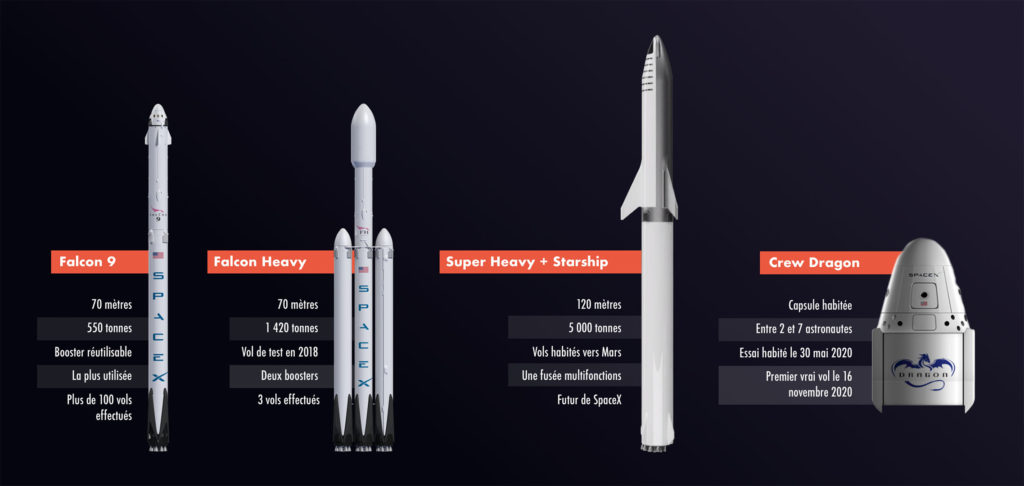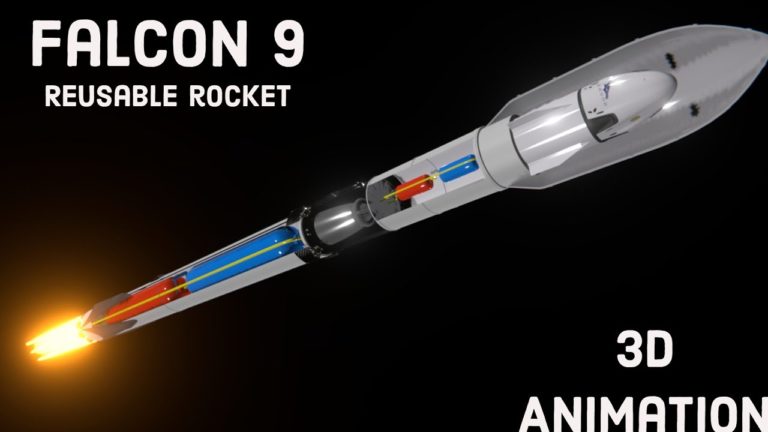HOW AN SPACE X FALCON 9 reusable rocket works?
What is Falcon 9 ?
Falcon 9 is a partially reusable two-stage-to-orbit medium-lift launch vehicle designed and manufactured by SpaceX in the United States. The latest version of the first stage can return to Earth and be flown again multiple times. Both the first and second stages are powered by SpaceX Merlin engines, using cryogenic liquid oxygen and rocket-grade kerosene (RP-1) as propellants. Its name is derived from the fictional Star Wars spacecraft, the Millennium Falcon, and the nine Merlin engines of the rocket’s first stage.
The rocket evolved with versions v1.0 (2010–2013), v1.1 (2013–2016), v1.2 Full Thrust (2015–present), including the Block 5 Full Thrust variant, flying since May 2018. Unlike most rockets in service, which are expendable launch systems, since the introduction of the Full Thrust version, Falcon 9 is partially reusable, with the first stage capable of re-entering the atmosphere and landing vertically after separating from the second stage. This feat was achieved for the first time on flight 20 in December 2015. Since then, SpaceX has successfully landed boosters dozens of times, with individual first stages flying as many as ten times.

Falcon 9 can lift payloads of up to 22,800 kilograms (50,300 lb) to low Earth orbit (LEO), 8,300 kg (18,300 lb) to geostationary transfer orbit (GTO) when expended, and 5,500 kg (12,100 lb) to GTO when the first stage is recovered, in a cargo shroud offering 145 cubic meters of volume. The heaviest GTO payloads flown have been Intelsat 35e with 6,761 kg (14,905 lb), and Telstar 19V with 7,075 kg (15,598 lb). The latter was launched into a lower-energy GTO achieving an apogee well below the geostationary altitude, while the former was launched into an advantageous super-synchronous transfer orbit.
In 2008, SpaceX won a Commercial Resupply Services (CRS) contract in NASA‘s Commercial Orbital Transportation Services (COTS) program to deliver cargo to the International Space Station (ISS) using the Falcon 9 and Dragon capsule. The first mission under this contract launched on 8 October 2012.
Falcon 9 has been human-rated for transporting NASA astronauts to the ISS as part of the NASA Commercial Crew Development program. Falcon 9 has been certified for the National Security Space Launch program and NASA Launch Services Program as “Category 3”, which can launch the most expensive, important, and complex NASA missions. Falcon 9 has been considered as the world’s most advanced space launch vehicle by various sources. As of January 2021, Falcon 9 has the most launches among all U.S. rockets currently in operation and is the only U.S. rocket fully certified for transporting humans to the International Space Station,[29] and the only commercial rocket to launch humans to orbit. On 24 January 2021, Falcon 9 set a new record for the most satellites launched by a single rocket carrying 143 satellites into orbit.
Five rockets of the version 1.0 design were launched from June 2010 to March 2013. Version 1.1 conducted fifteen launches from September 2013 to January 2016. The “Full Thrust” version has been in service since December 2015, with several additional upgrades within this version. The latest Full Thrust variant, Block 5, was introduced in May 2018. It features increased engine thrust, improved landing legs, and other minor improvements to help recovery and reuse. The Falcon Heavy derivative, first flown in February 2018, consists of a strengthened Falcon 9 first stage as its center core, with two additional Falcon 9 first stages attached and used as boosters. SpaceX plans to eventually replace Falcon 9 and Falcon Heavy with the much larger, in-development Starship launch system.
Do not forget to share your opinion with us to provide you with the best posts !




0 Comments